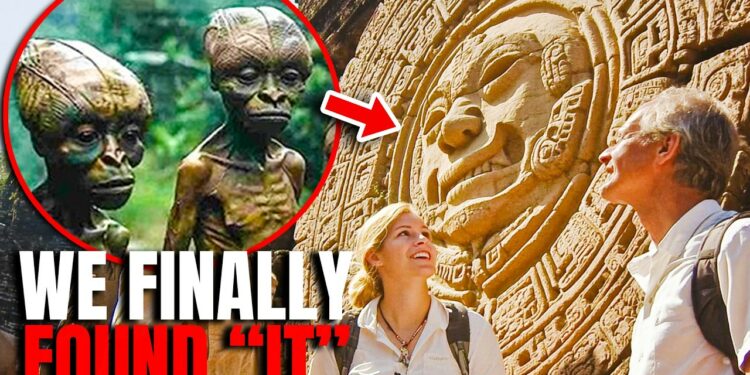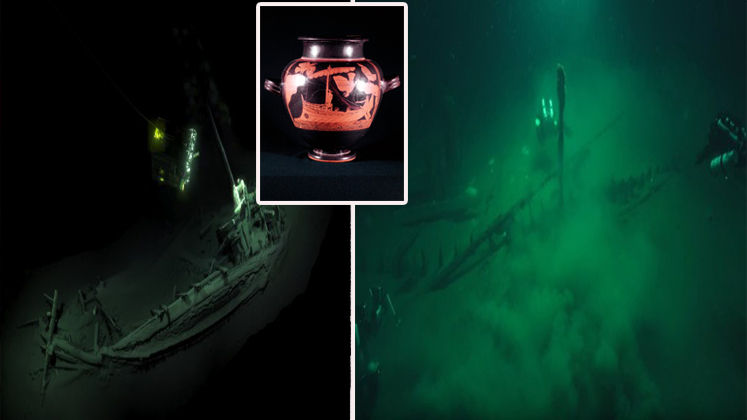For millennia, hidden beneath the emerald canopy of Mexico’s rainforests, colossal stone giants stood frozen in eternal vigilance. Buried under layers of earth and time, these relics belong to the Olmec civilization, the mother culture of Mesoamerica, predating the Aztecs and Maya. Once vibrant cities, now silent and reclaimed by the jungle, their legacy endures in massive stone heads, intricate carvings, and enigmatic symbols that defy explanation. Who were these master builders and artists? How did they achieve monumental engineering feats without the wheel or metal tools? Why did their civilization vanish, leaving only whispers and stone sentinels? Join us as we explore the heart of Olmec territory to uncover the truth behind this lost civilization.
In the dense jungles of Veracruz and Tabasco, Mexico, a world of mystery unfolds. Towering trees and filtered sunlight create a timeless realm where ancient secrets lie buried. The Olmecs, flourishing before the Maya and Aztecs, built sprawling cities like San Lorenzo Tenochtitlán, which thrived from 1200 BCE to 900 BCE. Covering 700 hectares near the Coatzacoalcos River, San Lorenzo featured elaborate earthen mounds, vast plazas, and a sophisticated stone drainage system, showcasing Olmec engineering. Ten of the 17 known colossal heads, carved from basalt, were found here, each a masterpiece guarding their creators’ legacy.
How did the Olmecs transport these stones, some weighing 50 tons, from the Tuxtla Mountains 80 kilometers away without wheels or beasts of burden? As San Lorenzo declined around 900 BCE, possibly due to environmental or political shifts, La Venta rose in Tabasco. This island city, thriving until 400 BCE, boasted the Great Pyramid, a 34-meter-high earthen mound aligned on a north-south axis, suggesting advanced astronomical knowledge. Massive stone altars and thrones, weighing up to 30 tons, depict figures emerging from niches, possibly symbolizing spiritual portals. Carvings of deities, jaguars, and hybrid creatures offer glimpses into Olmec mythology.
The colossal heads, ranging from 1.17 to 3.4 meters tall and weighing as much as seven African elephants, bear unique features and headdresses, possibly representing rulers or gods. Their purpose remains debated—guardians, memorials, or divine symbols? The 1999 discovery of the Cascajal Block, a 900 BCE stone tablet with 62 undeciphered symbols, hints at the Americas’ earliest writing system, deepening the mystery. The Olmecs also pioneered rubber production from Castilla elastica and Ipomoea alba, used for ceremonial balls and practical items, predating similar global innovations.
Speculation about transoceanic influences—due to the heads’ distinct features—lacks evidence, but the Olmecs’ influence on later Mesoamerican cultures is undeniable, shaping art, architecture, and mathematics. In the Amazon, newly discovered pyramids like those at Palenque and Koh Ker reveal the architectural prowess of the Maya and Khmer. Palenque, or Lakamha (“Big Water”), flourished from 226 BCE to 799 CE. Its Temple of the Inscriptions, a stepped pyramid for King Pakal the Great, houses a tomb with a jade mask and a sarcophagus lid depicting Pakal’s afterlife journey. Its hieroglyphs, among the longest Maya texts, detail dynastic history and rituals. The pyramid’s nine levels symbolize the Maya underworld, Xibalba.
Koh Ker, a brief Khmer capital (928–944 CE) in Cambodia, features Prasat Thom, a seven-tiered pyramid rising 36 meters, adorned with Hindu mythological carvings like a 4-meter Garuda. Both sites, reclaimed by jungles, were rediscovered in the 19th century. Palenque’s ongoing excavations, aided by lidar, reveal hidden structures, while Koh Ker faces preservation challenges. Tikal, a major Maya city (200–900 CE) in Guatemala, was a political and military hub with 50,000–100,000 inhabitants. Discovered in 1848, its Temple of the Great Jaguar housed the tomb of Jasaw Chan K’awiil I, with jade masks and artifacts. Its hieroglyphs detail rulers, battles, and alliances, while fortifications like ditches and walls highlight its defensive prowess. These sites, from Olmec heads to Maya and Khmer pyramids, continue to unveil ancient mysteries, challenging our understanding of early civilizations.

























